Every few years, I like to get away for a bit longer than just a long weekend. Long enough to get into a completely new routine and absorb the essence of being somewhere else. Maybe I like to imagine what it would be like if I lived in a different place, in a different time.
I would wander through historical sites, markets, and off-the-beaten-path restaurants. I'd become friends with the lady who sits at the market stall, the man who opens his bakery at 5 in the morning and sits on the doorstep with his cat, waiting for customers. Every time I think about the places I’ve been to, I think of a network of little homes.
Sometimes, you need an adventure.
Last year was a bit different because I hadn’t taken a holiday in two years and was in a very rebellious state. Beaten down by my office-to-home-to-office schedule, I wanted to run away and sail around the world. I didn’t want the calm strolls, the cities, but something more extreme.
It wasn’t until I shared my growing wanderlust with one of my coworkers, an unlikely character whose favorite pastime was, alas, playing Dungeons and Dragons, that I seemed to get my answer.
It turned out that he was the black sheep of his large family. His sister and mother were currently training to hike for charity. Hiking with a cause got my attention. But it was when I heard the destination that I immediately perked up and couldn’t stop thinking about it: Machu Picchu.
I didn’t know too much about Machu Picchu, except that, for seekers of old ruins, history, and culture, it was almost like Mount Everest. I imagined being alone in a strange jungle, with a giant backpack and climbing along a winding road, next to an abysmal canyon; my every step was a death-defying feat.
My coworker shrugged as he poured himself another cup of coffee. I’d have to get a guide, he said. “There are travel companies that organize exotic trips like that; it’s 2017 for Pete’s sake.”
Cusco culture shock
Landing in Cusco was a culture shock all in itself. There are so many things to do in Cusco itself that I began to wonder if I shouldn’t just stay in the city for my whole break. Maybe I could just take the bus to Machu Picchu and forget about all that walking. I was trying to absorb everything at once, and it left my head spinning.
I must admit that although I considered myself a very avid traveler, until now I had stayed in the confines of Europe and the U.S. My more adventurous trips had been to places like Rome, Venice, Greek ruins, France, and the Wieliczka salt mines. This was completely out of my comfort zone.
I felt like a first-time skydiver who jumped out of the plane and was still considering the consequences of her actions as the air was rushing past her and the ground was fast approaching. Did I do the right thing? I wondered, as I passed the street vendors and their wares.
But let me tell you about the old lady who sold corn.
What amazed me were the beautiful women, ladies, and grandmothers operating the market stalls. They sold impossibly beautiful fruit-and-pork sandwiches, which are almost everywhere.
I never realized I could get emotional about corn. But I still think to myself every once in a while, “Why didn’t you buy corn seeds and grow this corn on your balcony?” I was in the birthplace of corn, after all.
Deciding to try some Peruvian food, I chose to go to the Centro Artesanal Cusco instead of the popular San Pedro Market, which was brimming with tourists. It was a bit slower and quieter. The vendors were not pushy but very understanding as I shyly orbited the corn stall, periodically asking for one more in broken Spanish.
The ladies dressed in traditional, brightly colored clothes passed me on their way to the market, carrying handwoven textiles. They carried a lot, but their gait was relaxed and easy—a huge contrast to my sputtering half-walk, half-crawl. I'm almost certain that these women would float like beautiful, colorful balloons if they descended to sea level.
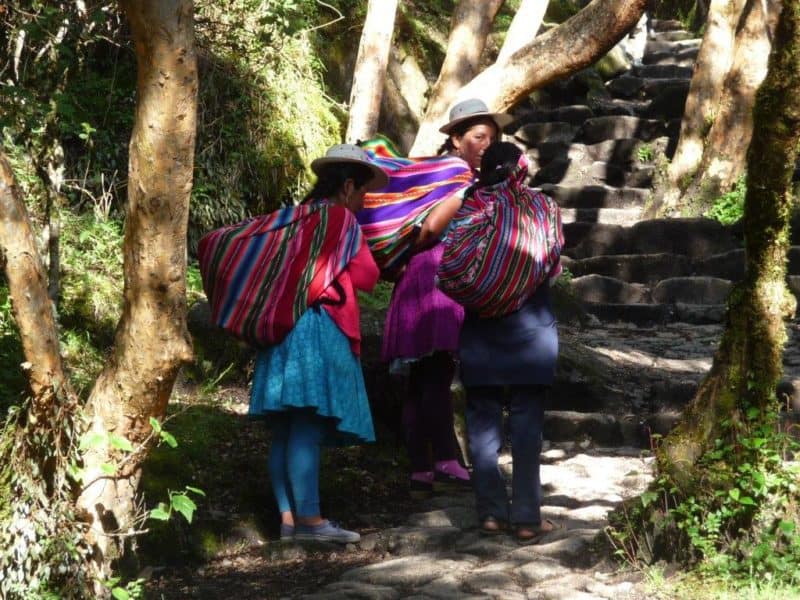
Adjusting my altitude
Let’s not forget that Cuzco is at 3399 meters above sea level, and I planned to stay here a whole week before meeting with my group and starting our journey. I needed to acclimate. Usually, two days are recommended, but I didn’t want to chance it. The rest of my group and our guide would be joining me in a few days.
It’s important to book with an experienced outfit—they will supply porters who carry some of your load and set up camp each night. They will take care of your permits. And what’s most important, they provide you with hot food and encouragement on the trail. I made sure to choose a trekking company that prided itself on having a good relationship with the local staff they hired. (I used this one.) The porters would carry my load, but I didn’t want to be a burden.
I have to admit, I felt funny at first. Walking around and doing normal things required about twice as much effort as usual. I got tired easily. I had to sit and rest. But after the initial two days, the fog and tiredness caused by altitude (and jet lag, no doubt) began to wane. I felt like myself again and could explore Cusco with excitement and my usual curiosity.
Cuzco is actually one of UNESCO’s most interesting treasures.
For over three centuries, Cusco was the capital—the very heart of the mighty Inca empire. In fact, some of the walls of the city date back a lot earlier than that: the 1100’s! The Killke people occupied this region before the Inca and left behind many treasures.
At the time when England was just beginning to take shape, and the Byzantine Empire still held sway in Christian Europe, the walls of this great city were already being built out of stone. No mortar was used in building these amazing structures, and I spent a long time staring at the walls in disbelief.
They were like giant Legos, snapped together. Except these weighed tons and had to be cut to a size so exact that a piece of paper would not fit in between the boulders. Of course, later on, the Incas would add to the structure. And the Spanish would subtract.
If you thought you knew about Cuzco, you might want to check again. On the hillsides above, there is a pre-Inca holy complex and stronghold that has recently been the site of archeological discoveries.
Or what’s left of it. It was said that “there isn’t a house in Cuzco that doesn’t have stones from Sacsayhuaman.” The Spaniards took it apart in the sixteenth century and used it to build their own buildings. It is still very impressive.
I wandered around the busy structures; the stone walls reminded me of a tight tortoise shell. It was so different from what I had seen in my previous journeys, almost alien. How did they manage to build it with such perfection?
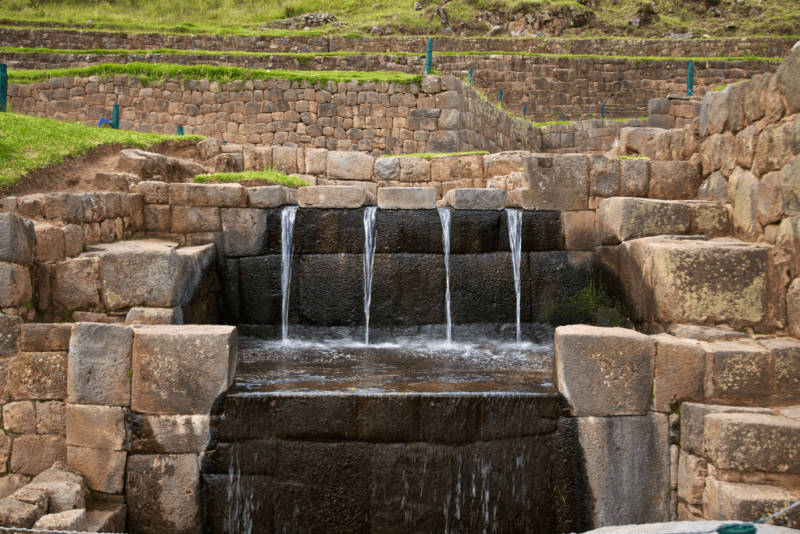
I saw a group of girls practicing yoga in the dry grass of the courtyard. Next to them, a group of American tourists stopped to admire the view. I could hear their guide talking about how the descendants of the Incas still celebrate an elaborate festival of the winter solstice and new year here. Inti Raymi’rata—the sun festival.
I mentally committed to returning here for the event in June. Maybe next year? This year I still had a few mountains to climb. The time was drawing near for my group to come together in the hotel that my trekking company had booked.
Beginning to hike the Inca Trail
I have very few true heroes in my life. Amongst them are my father, the great female traveler Isabella Bird, Mark Twain, and now this list would have to be expanded to include all the porters on the trek to Machu Picchu. All of them. I had spent about four months getting in shape. I could easily say that I was in better shape than I was when attending university. I felt like a very formidable woman. But two days into our four-day journey, I felt every step and every breath I took.
Every breath you take, every move you make… What’s more annoying was that song was on repeat in my head. I tried to make the lyrics rhyme to include the Inca Trail, but my brain failed me. Those porters who were hired to carry most of our loads were like a troop of angels. Never once did they make me feel slow or look annoyed. Every time we stopped to get a short break, I would look around with disbelief.
I was actually here. Doing this.
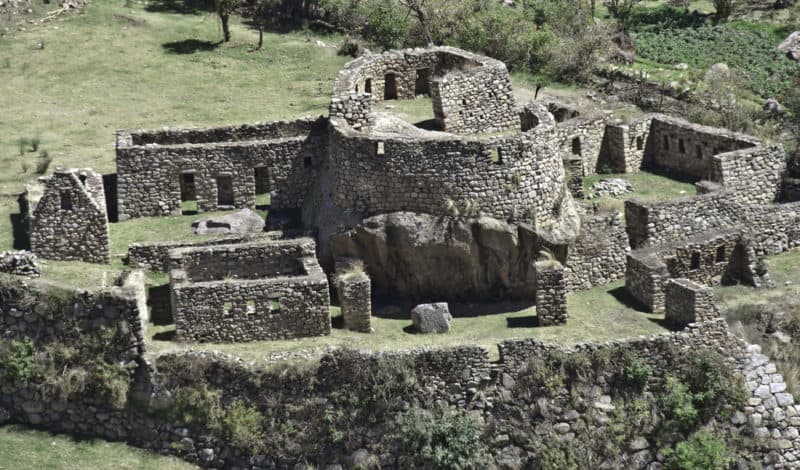
There were a few more people in our group—we were a happy bunch of trekkers, with everyone slightly out of their comfort zone but determined to go on.
Our ages ranged from twenty-one to fifty-something. For most of us, this would be a trip of a lifetime.The plan was to walk about five hours a day. On the first day, when I woke up on the trail and realized I would have my breakfast made for me, I wanted to cry in gratitude. It was the best breakfast I ever had. The sausage, eggs, and coffee – what more could a hiker want?
Later, I would realise that these walking chefs were masters of their craft; they whipped up chicken, quinoa, and vegetables that couldn’t have tasted better in a five-star restaurant.
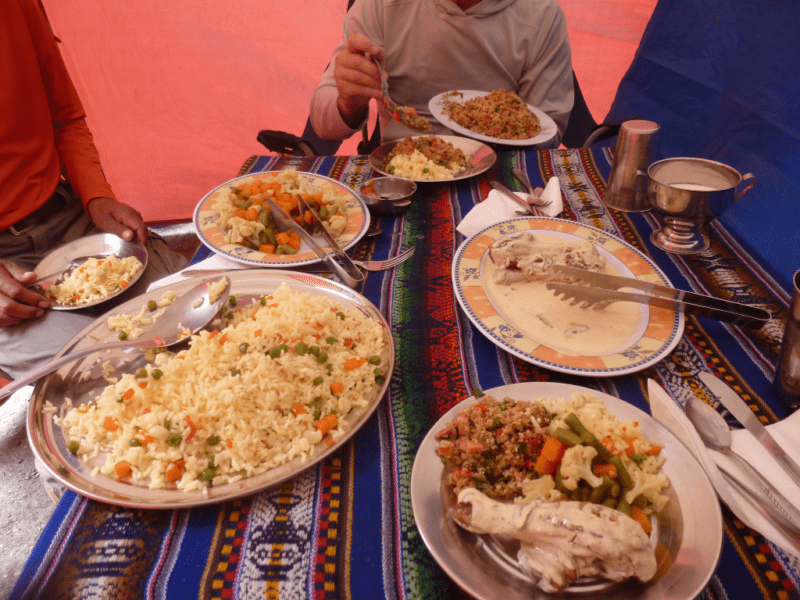
The porters cooked and joked around. I experienced a deep sense of peace and happiness I haven’t felt in such a long time. I realized that maybe, subconsciously, this was what I was looking for. Not only the physical strain that challenges every muscle in my body, but also the peace that comes with waking up after that strain. The knowledge that you’re on your way somewhere, that it’s a trek, a journey.
I realized that although Machu Picchu was on the other side of this mountain path, it was the path itself I had come for.
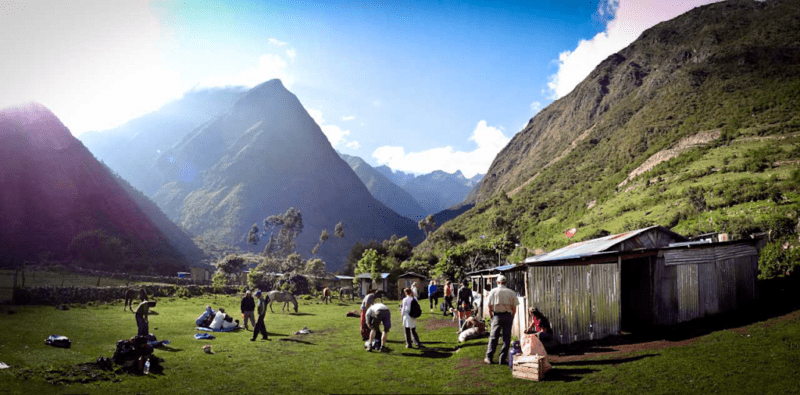
Our guide was very understanding. He even pointed out that a lot of people start out talking a lot about the goal. It’s a very common mindset of people who go to work and solve problems every day. Sometimes, we forget that reaching the end isn’t always the goal.
By the third day, I was trying to etch every tree, every view of fog-enveloped mountainsides into my memory. The moist jungle smell, the hot air clung to me like perfume. I tried to imagine what this might have been like 700 years ago.
Classic Inca Trail.
We call it the “Classic Inca Trail”—this path that people take from Cusco to the lost ruins of the Incas. But in reality, the Inca Trail is a network of ancient paths, highways, and roads that were there even in pre-Incan times. Many cultures—some known, some unknown—have helped to build this incredible system of roads. We must keep in mind that currently, not unlike the ancient Roman roads across Europe, only a fraction of these Inca roads remains the way they once were.
UNESCO and IUCN have been working with the countries that this vast network spans, in hopes of preserving it for future generations. Travelling on a small part of it made me feel like I was in one of those amazing places that at one time was one of the most important and interesting in our global human story. It is our responsibility to protect places like this.
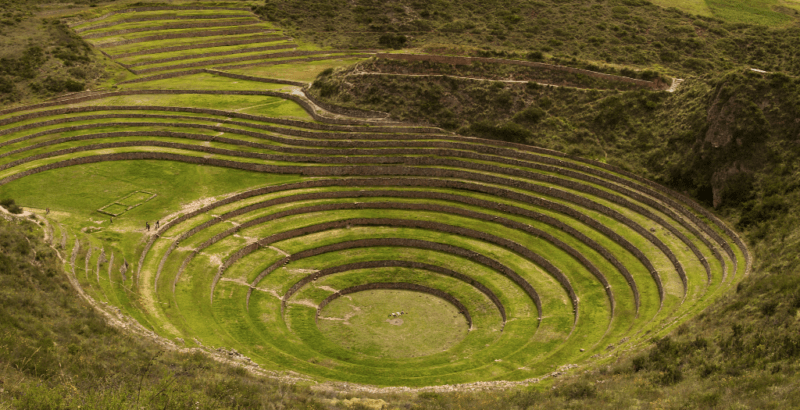
I have to admit, I was a bit annoyed by the rules and regulations of the trail at first. And when you imagine a backpacker free in the wilds of Peru, you don’t realize that he too has to have a trail permit, and only 500 are given out per day. Those permits are given to individuals, and you can’t trade them, sell them, or swap them. If you can’t go, then the permit is lost. Now, I went through a licensed Inca Trail tour operator who got the permit for me. They also supply their porters with permits. Yes, the porters need permits too!
One of my companions said that every year she would forget about this and only remember once it was too late. As a result, she has hiked many adjacent Inca roads that don’t require a permit and are a bit off the beaten path. This was her first time hiking the most legendary one, into the heart of Machu Picchu. She was, by the way, the oldest trekker in our group and would routinely leave us all in the dust. She was methodical and quiet as she took one deliberate step after the next. I wanted to be like her when I grew up.
Machu Picchu—end of the trail
The moment of anticipation finally came after I had gotten used to our routine of early breakfasts with coffee and jokes, fresh morning air, and mist in the trees. I had gotten used to the road, and I was almost sad as one of the ancient world’s great wonders unraveled before me.
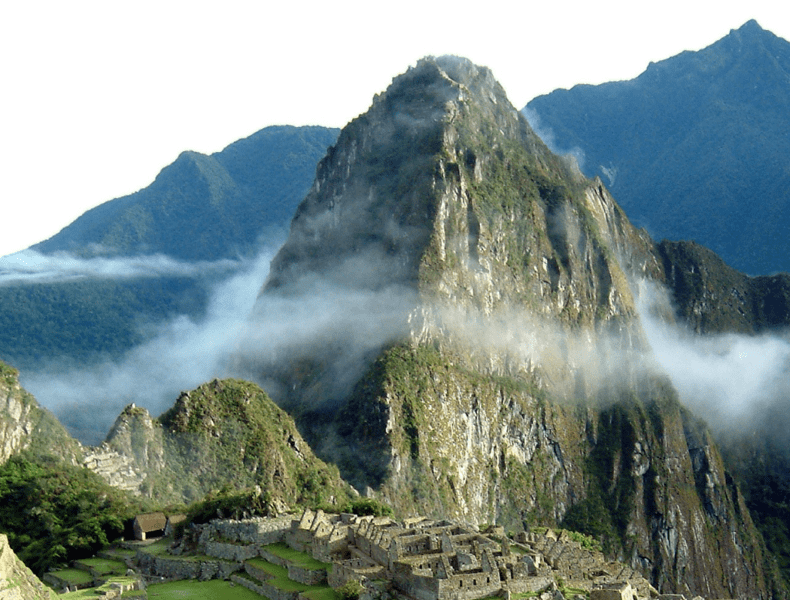
Machu Picchu is a city that’s not of this world. If there was ever a moment that I felt like I was walking in the clouds, this was it. I thought of the first person that came here and decided to build this city. Or even to settle here. Did they think they were closer to gods? I was certain of it.
This was a citadel, a home to rulers. It was abandoned when the Spaniards came, and it fell into total obscurity only to be brought to public light in 1911.
Of course, this was a time when exploration was very much the topic in every fashionable salon—Amundsen, Shackleton, and Scott were battling the freezing South Pole, and people’s imaginations were caught up in the unexplored regions of the world.
There is some evidence that earlier explorers came here and robbed the forgotten fortress in the nineteenth century. The explorers that would follow, Hiram Bingham of Yale in 1911 and then later in 1912, were part of a world more familiar to us. Sponsored by National Geographic, they cut away the jungle with help from local labor and uncovered the magnificent home of the god-like kings.
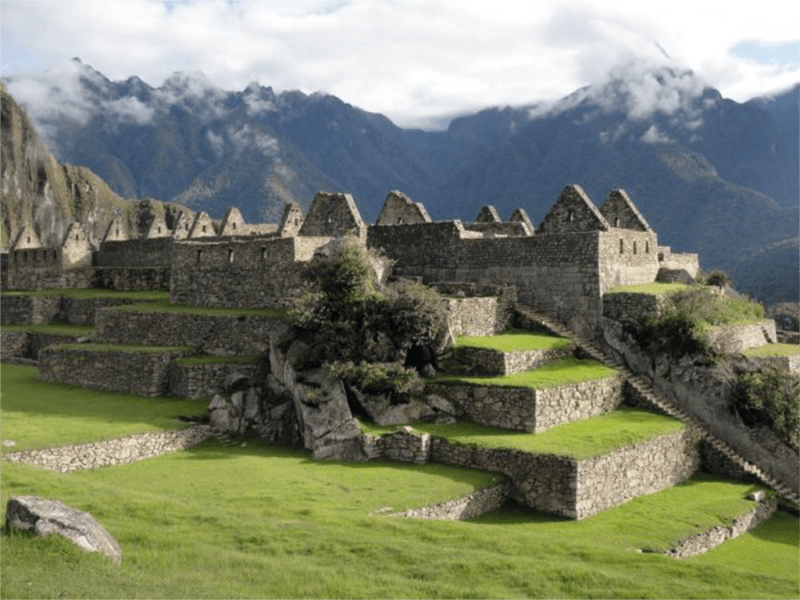
Of course, many argue that Machu Picchu was never really lost, because the local farmers were the ones to show the way to the ruins. They always knew what was there in the jungle and used the Inca Trails of their ancestors to access this cloud city.
We took in the sights with disbelief. The terraces cut into the mountainside acted as support for the mountainside and as places to farm crops. The ruins themselves presented the already-familiar perfect Rubik's cube of stones. They were a part of an almost gravity-defying collection of structures. The whole estate—because this was the summer palace of the kings of the Incas—looked as if it was floating on the clouds, and if I could stay here for a few days, maybe I would begin to feel as if I were related to the gods of this incredible land.
Alas, with our arrival and tour of the ruins, the mood shifted a bit. We were joined by tourists that came here by bus. Yes! You can skip the whole crazy ordeal and bus it from Cusco—surprise! One of our fellow hikers was desperately trying to take a selfie with a llama without getting too close. A lot of human chatter could be heard. I was slowly realizing I’d have to come back to earth from this cloud.
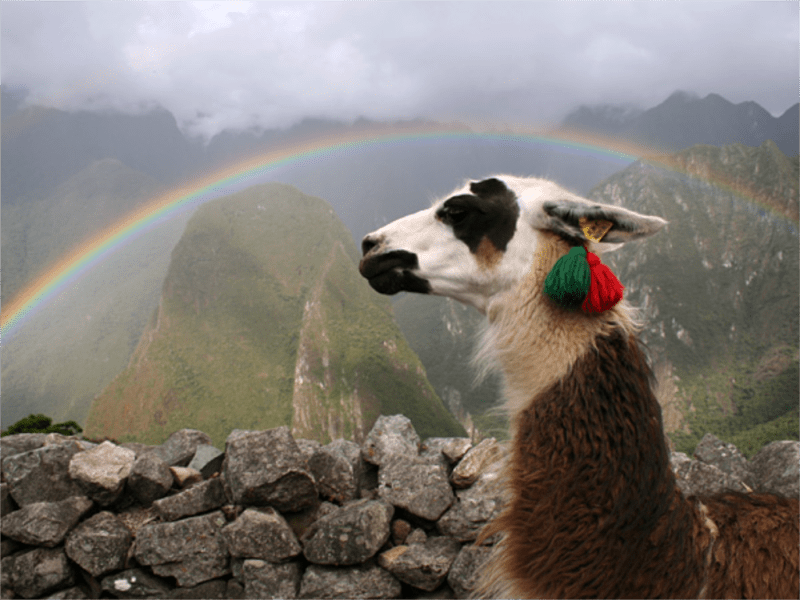
As we got closer and closer to our hotel in Cusco, I saw the sights I already considered familiar from my walks through this ancient city, and I was glad to be “home.” I was even ready to face going into the office in a few days, knowing that I came back a different person somehow. A part of my heart will always be on that quiet trail where people have walked for uncountable centuries.
ⓘ READ NEXT: Where is the Real Equator Line in Ecuador? (Hint: It's not where you think!)
Inspired? Pin this post and share it with your friends!
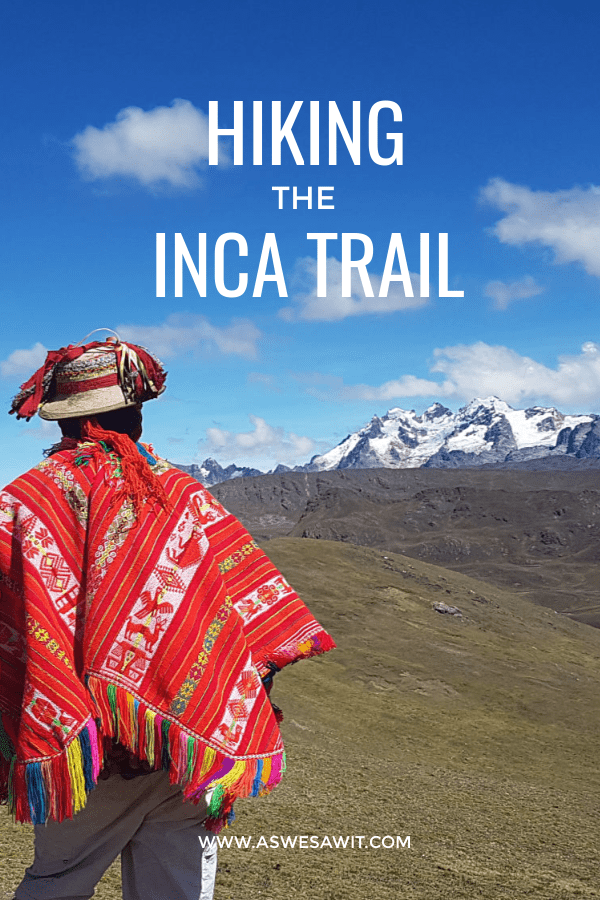

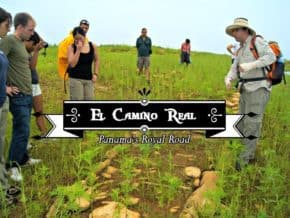

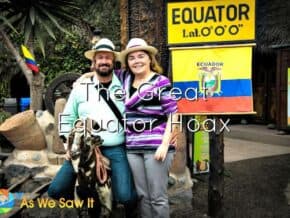
Your publication is very complete, I am also in Cusco and there are a variety of new tourist places which you can visit
Really? Which new tourist places do you recommend?
Excellent pics about your experience in my country. We wait for your for other adventures like Salkantay Treks, Lares Trek, Choquequirao and Ausangate Trek
Regards!
Those would be wonderful as well. What would you suggest for people who are more interested in culture and history?
I missed the Inca Trail Emily but vibe with your need for an adventure. Me and my wife crave exploring 3 years ago so we house sat in a remote jungle, Costa Rica style. Or we hut sat 🙂 Either way, when you feel the pull to be adventurous, your soul goads you toward fun, freedom and some deep fears too. What a delicious mix to explore.
Agreed, Ryan, Emily had quite the adventure! Kudos to anyone who challenges him/herself to venture outside of their comfort zone. Costa Rica? That includes you, my friend!
Linda
Oh!! Costa Rica is absolutely on my bucket list – an absolute paradise! Just reading that gave me the shivers! 🙂